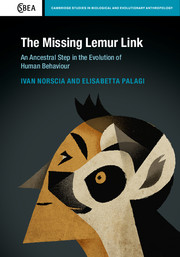Book contents
- Frontmatter
- Dedication
- Contents
- List of contributors
- A message from Jane Goodall
- Foreword
- Preface by the authors
- Acknowledgements
- Part I Communication: from sociality to society
- Part II How conflicts shape societies
- Part III Why lemurs keep in touch
- Part IV Closing remarks
- Looking back to the future – Michael Huffman
- Index
- References
Preface by the authors
Published online by Cambridge University Press: 05 May 2016
- Frontmatter
- Dedication
- Contents
- List of contributors
- A message from Jane Goodall
- Foreword
- Preface by the authors
- Acknowledgements
- Part I Communication: from sociality to society
- Part II How conflicts shape societies
- Part III Why lemurs keep in touch
- Part IV Closing remarks
- Looking back to the future – Michael Huffman
- Index
- References
Summary
Diversity organises unity which organises
Edgar Morin, 1977Theoretical discussion and debate are open on which part of social behaviour is really exclusive of Homo sapiens and other apes, and what, instead, is rooted in the common ground of primate origins. Since the time of our common ancestors, lemurs have been following their own evolutionary pathway to become ‘modern primates’. This process, enhanced by Madagascar's isolation from the rest of the world, which started about eighty million years ago, has led lemurs to possess a puzzling combination of features, such as a small brain and communication highly based on smell combined with biological peculiarities, such as female dominance, lack of sexual dimorphism and strict seasonal breeding. On the other hand, group-living lemurs share basic features with social monkeys and apes such as cohesive multimale-multifemale societies, female philopatry and individual recognition. Lemurs are the ideal model to shed light on the ‘primate behavioural potential’ in terms of conflict management, communication strategies and society building, and on how much these crucial aspects of social living are similar to or different from those found in monkeys, apes and humans. Part of the perceived gap between strepsirrhines and haplorrhines – also mentioned by Alison Jolly and Ian Tattersall in their foreword – probably lies in the divergent research methodologies applied to these two groups. The aim of this book is to review and expand upon the newest fields of research in lemur behavioural biology, including recent analytical approaches that, so far, have been restricted to haplorrhines.
Breaking the wall
Are lemurs primates? This question may sound rhetorical, but unfortunately the answer (yes, they are) cannot be taken for granted.
The idea for this book came to our minds after a few influential Italian anthropologists had questioned the relevance of lemur behavioural studies to the anthropological domain and, therefore, to the understanding of the evolution of human behaviour. Monkeys were discriminated against as well, because – according to these scholars – they did not fit in the discipline, unless direct comparisons with humans were drawn. While the significance of lemurs and monkeys to human evolution was debated (and no consensus reached), apes were automatically included in the anthropological domain, thankfully. Of course the discrimination of strepsirrhines and monkeys was instrumental in favouring other research strains.
- Type
- Chapter
- Information
- The Missing Lemur LinkAn Ancestral Step in the Evolution of Human Behaviour, pp. xviii - xxxiPublisher: Cambridge University PressPrint publication year: 2016

